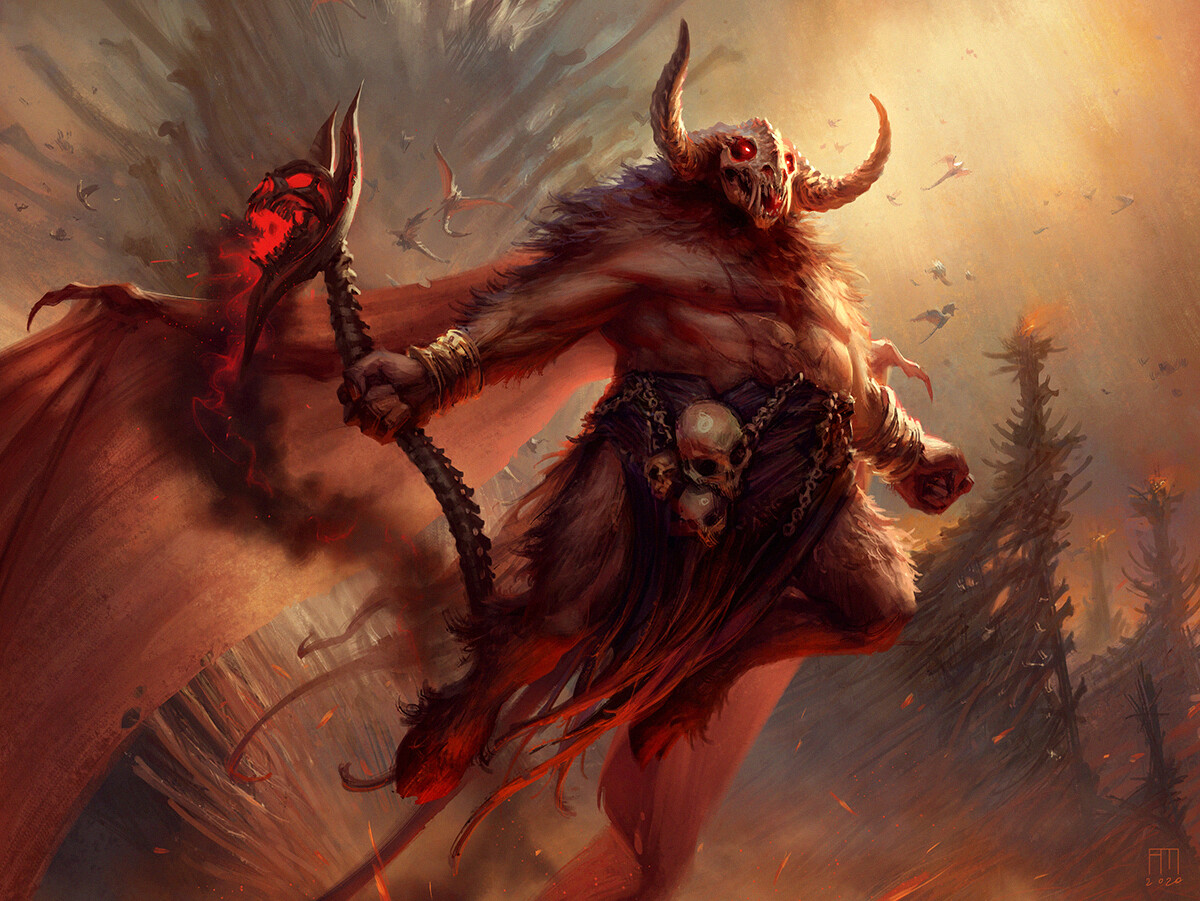Since you like wikis so much. You can follow the Demogorgon link to the second quote.
"Ever hungry for more power, Orcus wanted to be recognized as "Prince of Demons", a title held by
Demogorgon and coveted also by Graz'zt. As a result, he became the arch-enemy of both demon lords. In time,
Orcus also achieved true godhood."
"Demogorgon was a powerful demon lord and
lesser deity from the Abyss"
Orcus, also known as Tenebrous[4][7][23] was a demon prince and purported primordial[24] that served as master of the undead from the depths of the Abyss.[11][25] Returned from undeath but not technically alive, the Demon Lord of Undeath was the multiverse's staunchest advocate for stagnation...

forgottenrealms.fandom.com
Okay, so now at this point we have Asmodeus, Orcus, and Demogorgon as Gods. We also know that Graz'zt is a peer of of Demogorgon and Orcus, and his son is a famous demigod (title given before Demigod was just a rank of power, so possible evidence that Graz'zt was originally conceived of as a god)
Lot of this going around it seems.
Um, yes I have. I guess I have to quote it for you again. "Choose a god, a pantheon of gods, or some other quasi-divine being from among those listed in appendix B..." It does not limit you to Eberron, but nice try.
I never said it did limit you to Eberron. It limits you to Appendix B, and those beings from Eberron are the only ones not listed as gods. So, is it not possible that those non-gods in Appendix B were the "quasi-divine beings" beings referenced?
After all, if your only source is 5e... you would have no way of knowing those other beings were once Demigods. And the Sword Coast where you listed more never refers to them as Demigods.
No. Prayers in the context of clerics are divine spells. Omens are just things sent by the Demon Lord. He could send a black crow to hit a tree, and then the gnolls would interpret that.
So, if an acoylte who can't cast divine spells begs their diety for safety, and the deity sends an omen leading them to safety... what would you call that? Because form what you just said you can't call it praying and a prayer being answered, because no clerical spell was cast.
Which seems like a bizzarely narrow way to talk about prayer. Almost like it is crafted for a singular puprose, like limiting it only to clerical spells that you can then claim aren't granted by the Demon Lord so you can say he doesn't answer prayers.
What part of magical power = divine clerics do you not understand. Warlocks get power from Demon Lords all the time. That doesn't make a Demon Lord a god that can hear and grant prayer spells.
I would ask you the same about divine clerical spells =/= prayers. But you'll probably try and twist it around to some extremely narrow definition relying on older editions.
I don't have to disprove clerics of Demon Lords. YOU have to prove it, since it was your claim. All I did was show how your "worshippers" and "priests" passages can be explained by completely non-magical means. Now you have to prove that what I've shown isn't true and that they really do grant clerical spells, and you have to show it explicitly.
And I've shown how "clerics" of Gods can be completely explained via non-magical means too. Since the argument can apply to both sides, doesn't it seem reasonable to give the same benefit of the doubt to both sides too?
Yes. Yes she can do that as a demigod. There is no need for her to grant spells. All she needs to do is supervise the portfolios she has been put in charge of. That's the point of exarchs. Virtually all of them were Demigods or weaker. They're lower management like Solars.
Right, I guess I need to quote the book. AGAIN.
Quasi-deities have a divine origin, but they don’t hear or answer prayers, grant spells to clerics, or control aspects of mortal life. They are still immensely powerful beings, and in theory they could ascend to godhood if they amassed enough worshipers. Quasi-deities fall into three subcategories: demigods, titans, and vestiges.
So, actually, no she can't do that as a demigod. Explcitly in 5e, that ability was taken away. To hear an answer prayers, the job of an exarch, they need to be at least a Lesser Diety in 5e. And notably, all the demigods and exarchs that used to answer prayers and grant spells in previous editions... are not longer refered to as Demigods.

